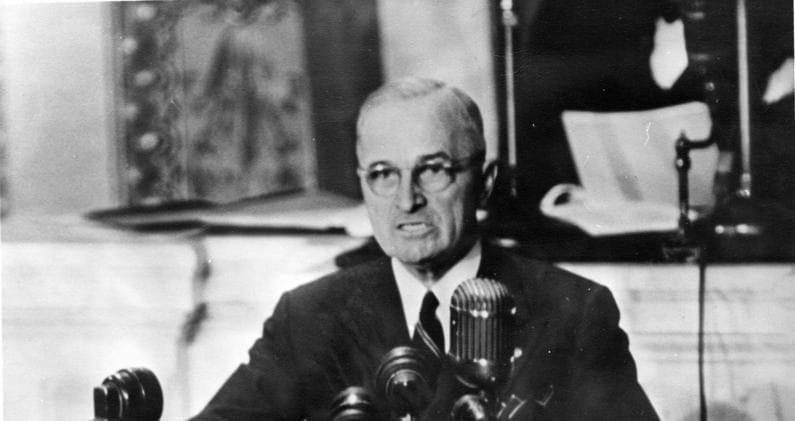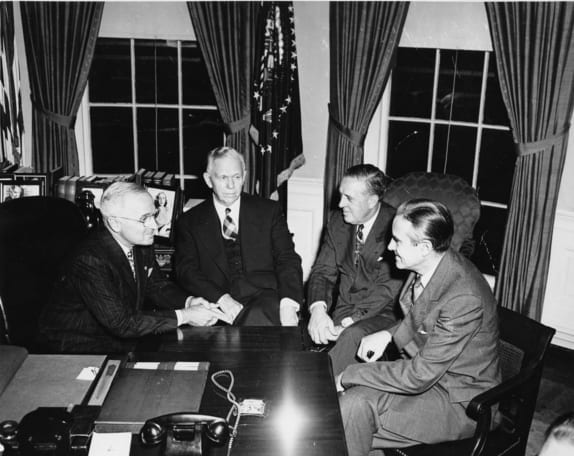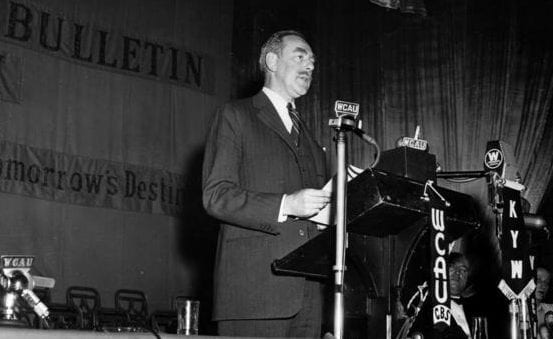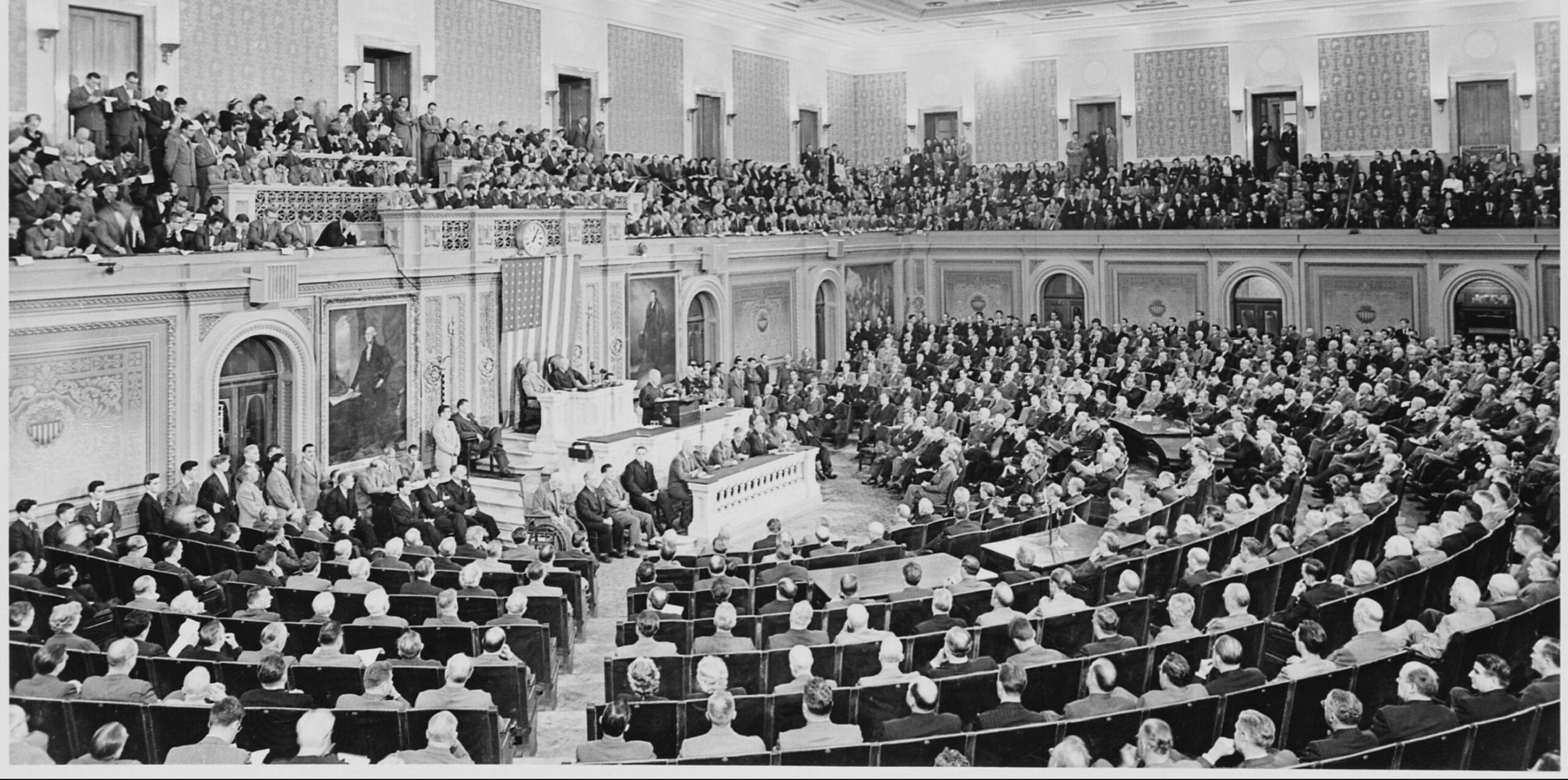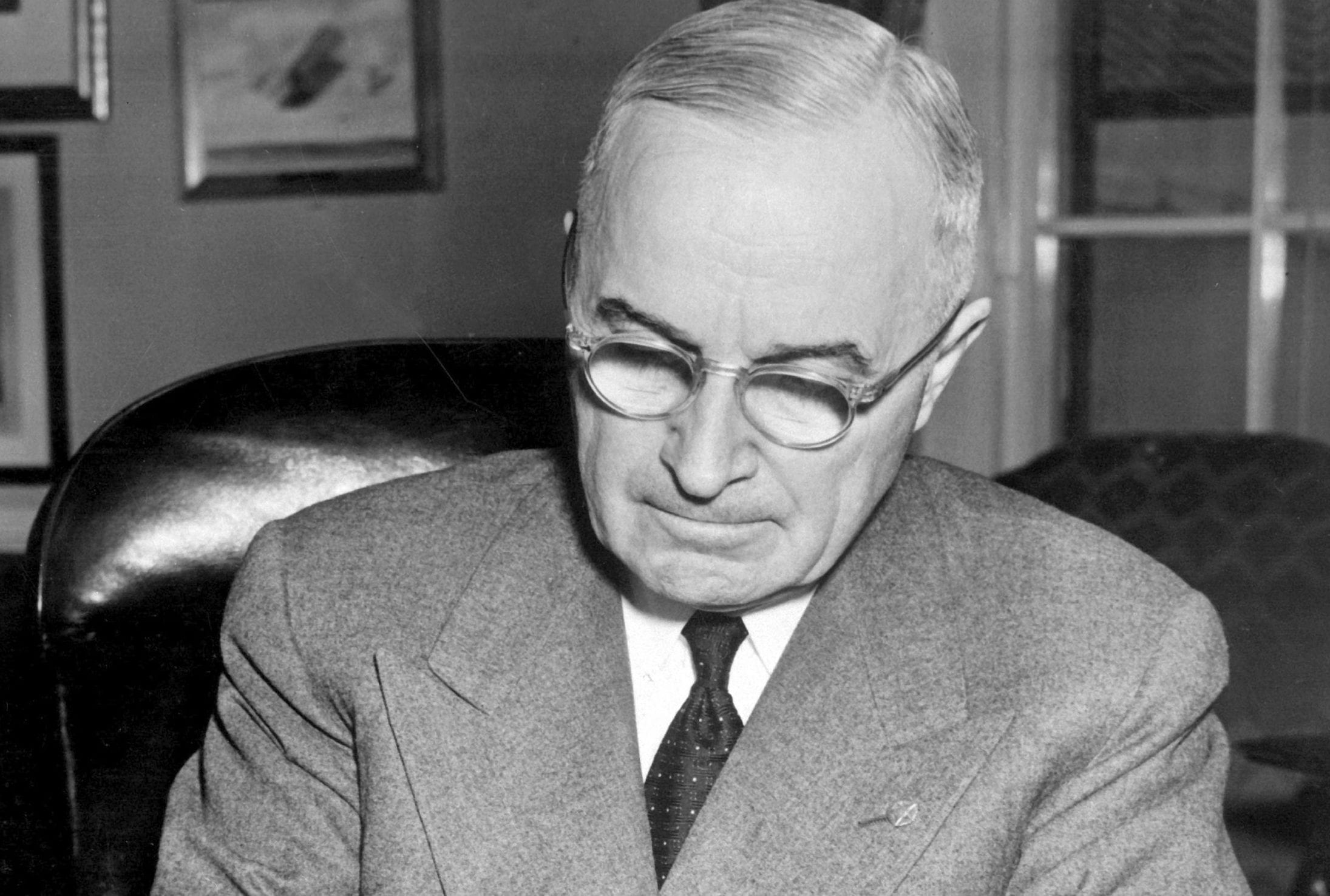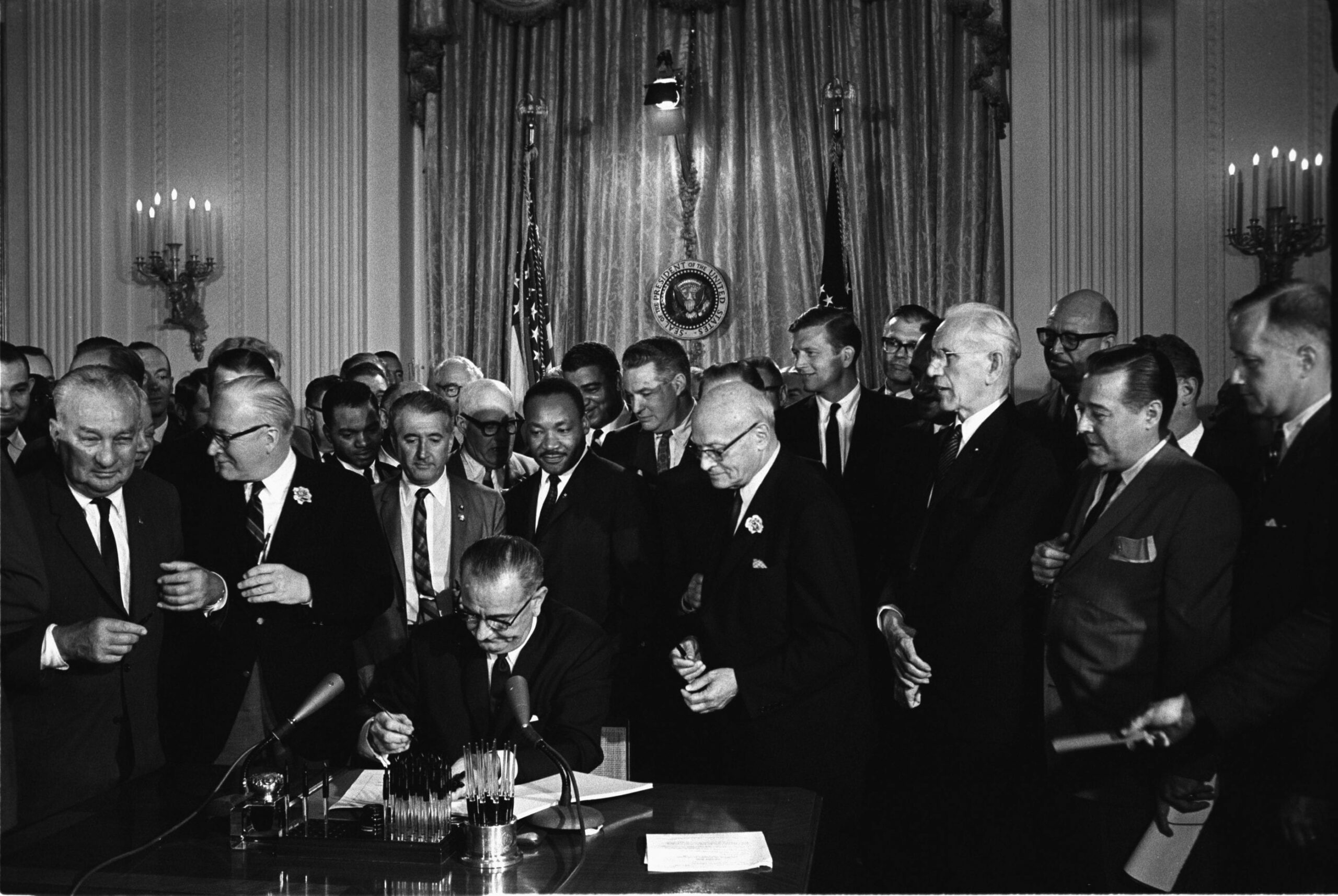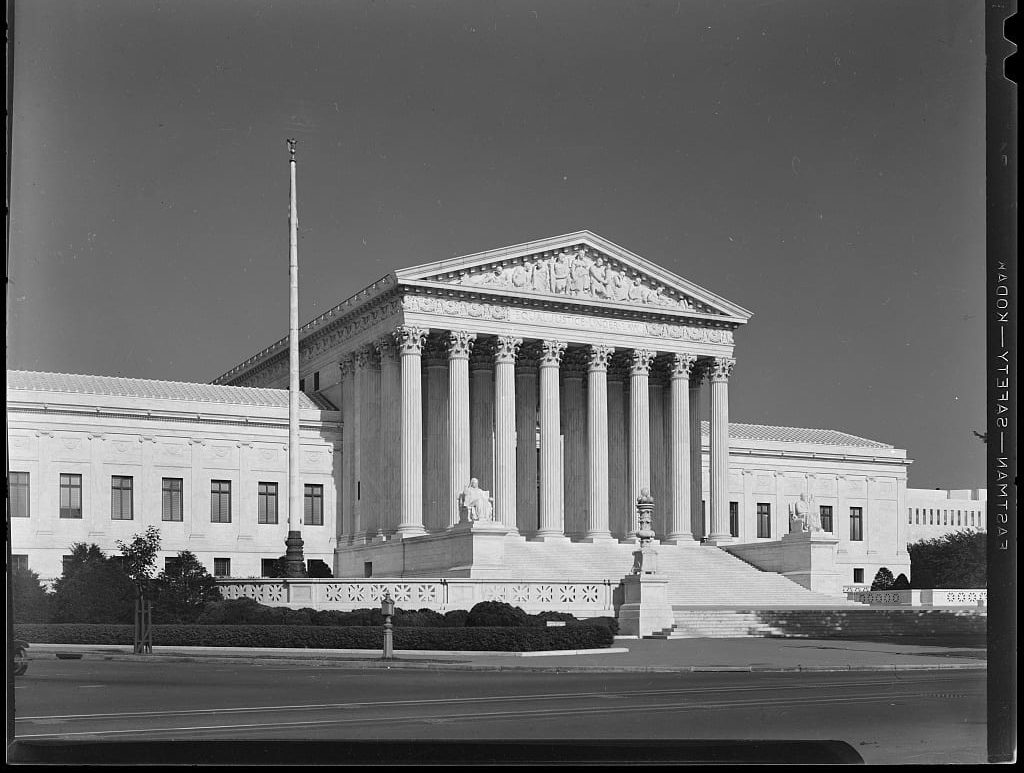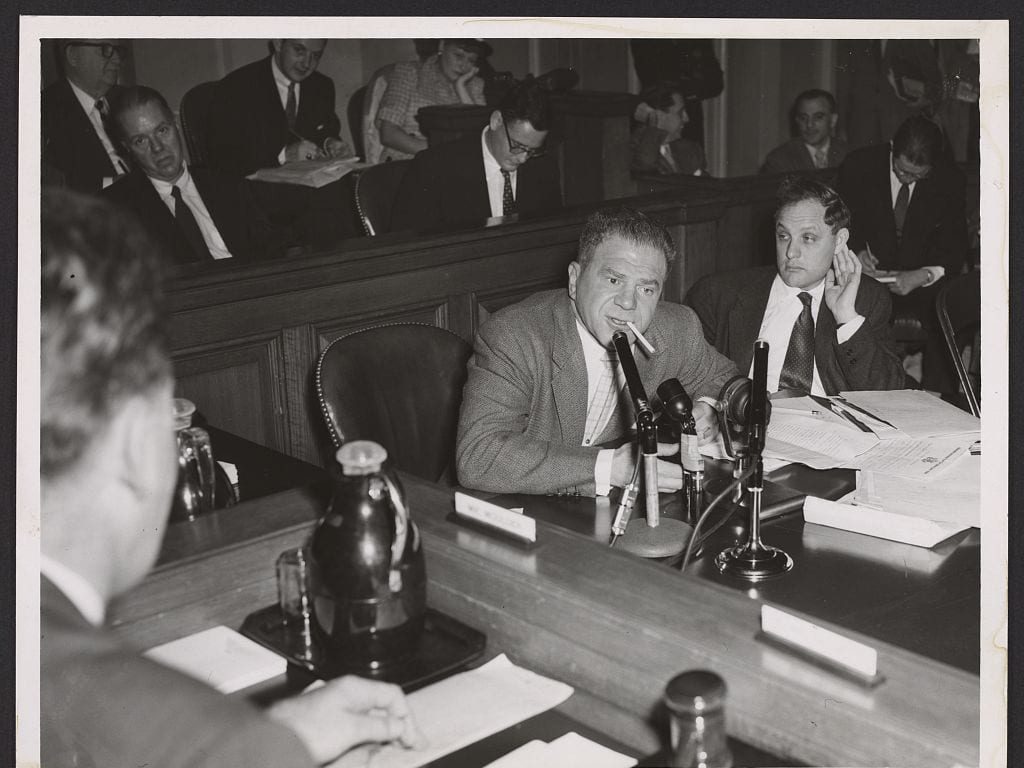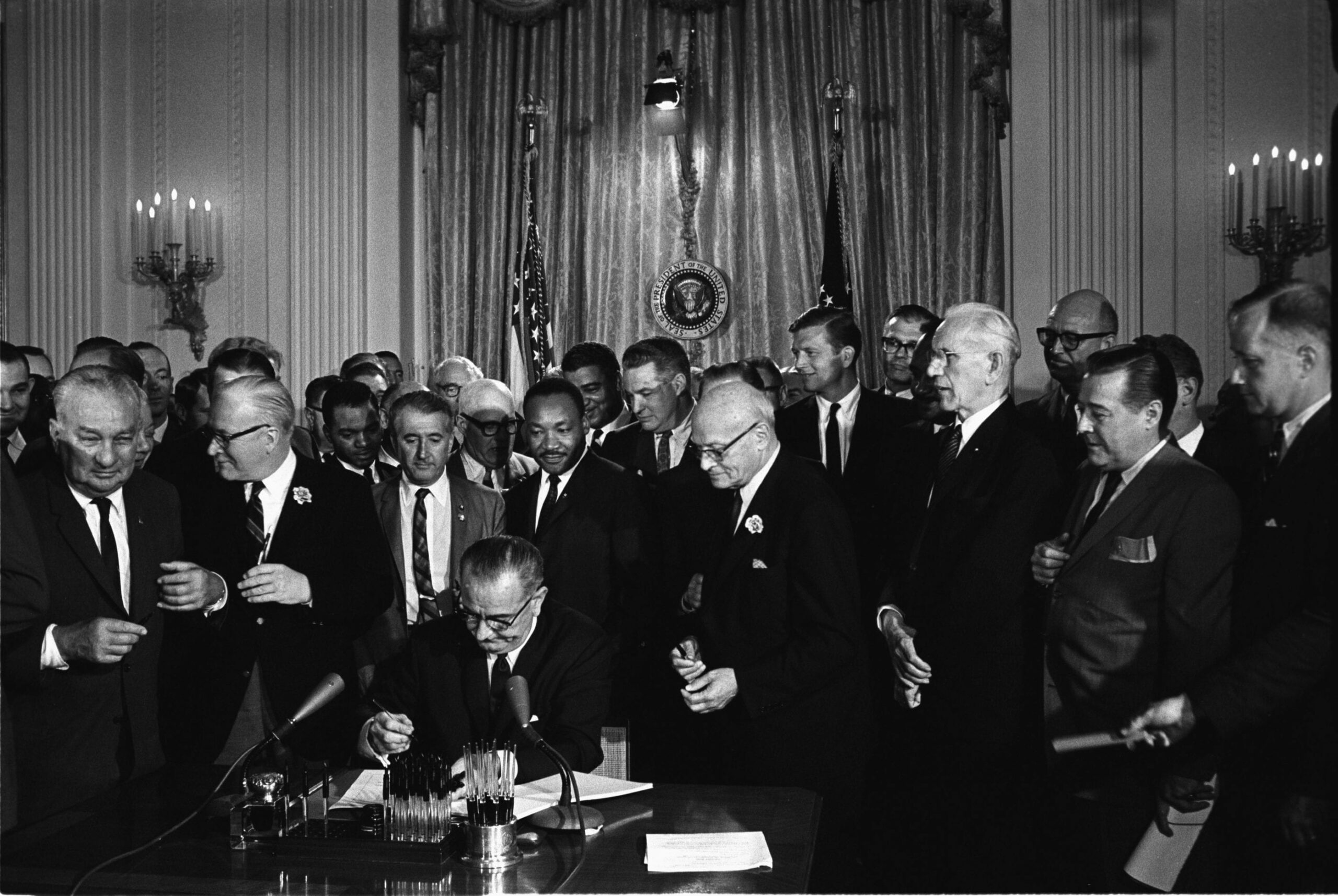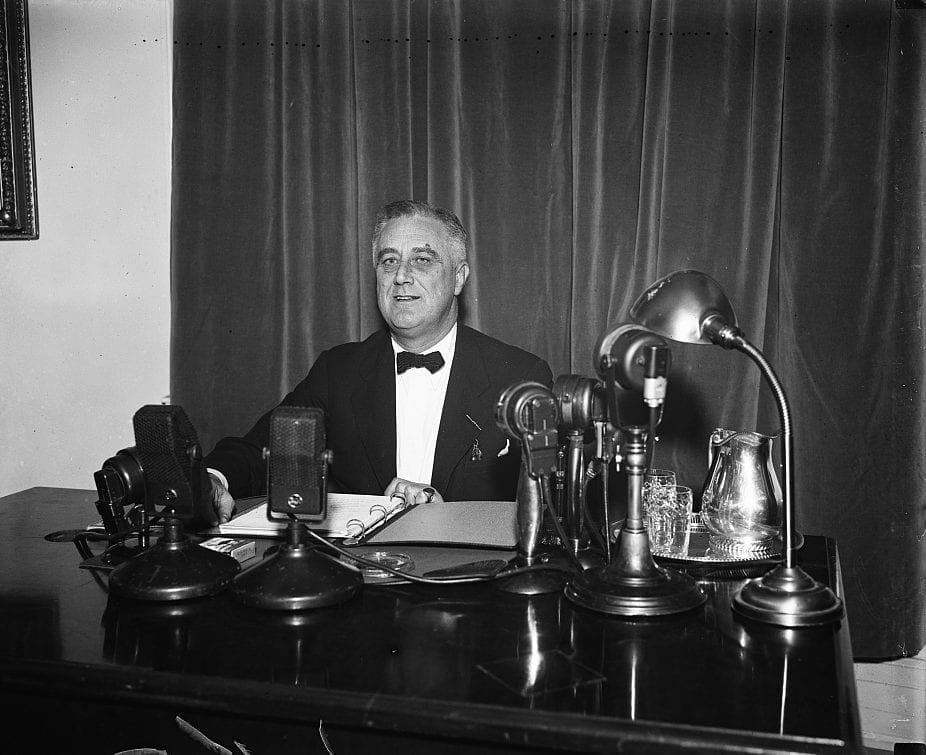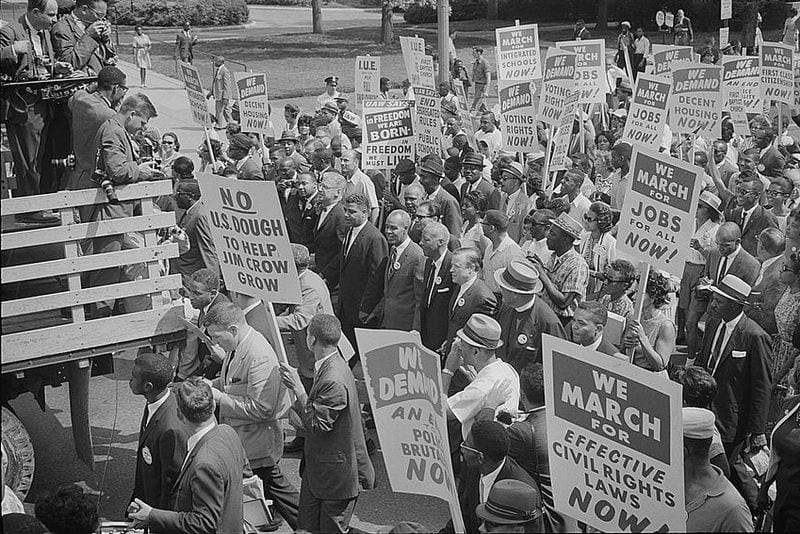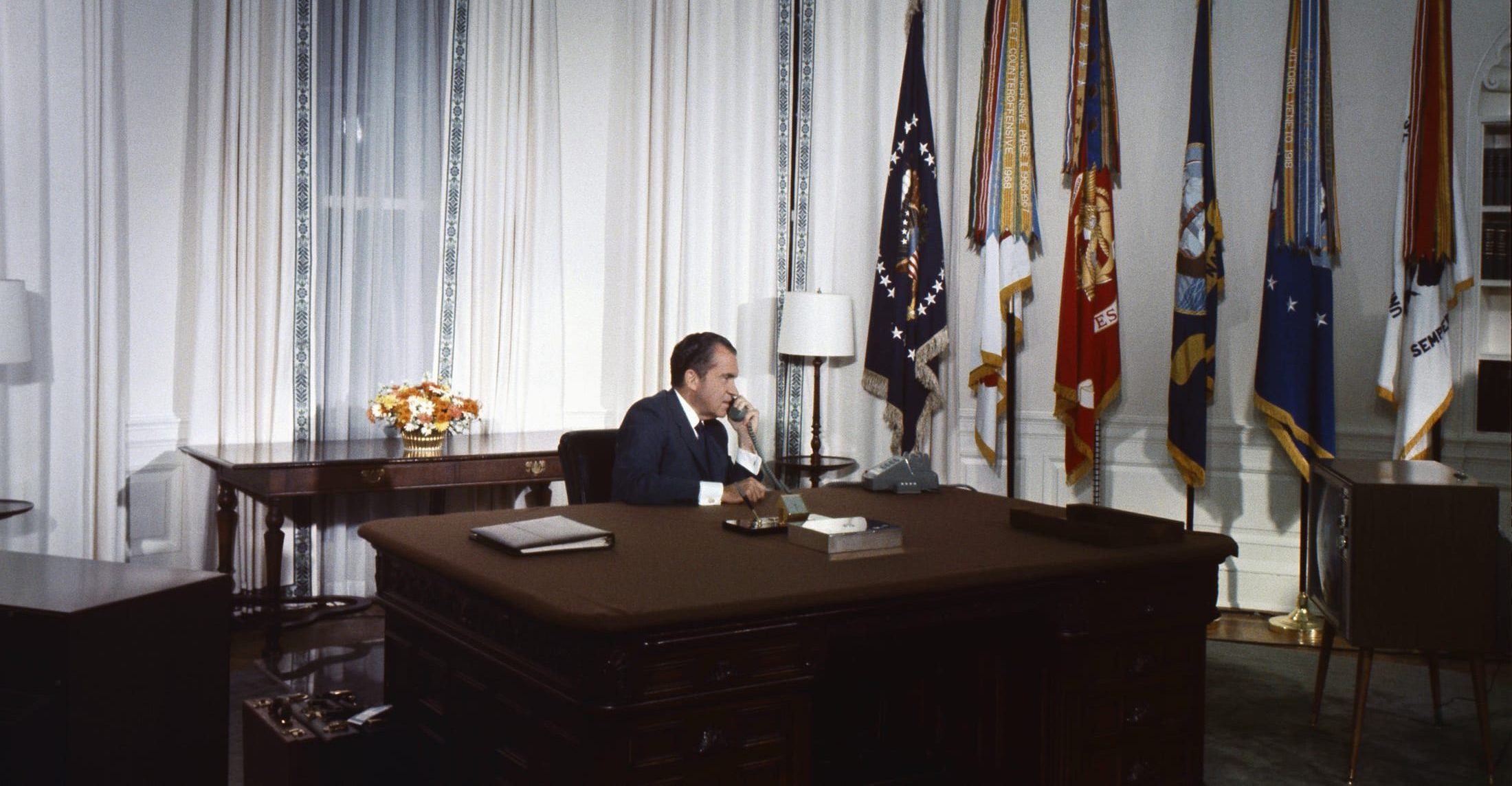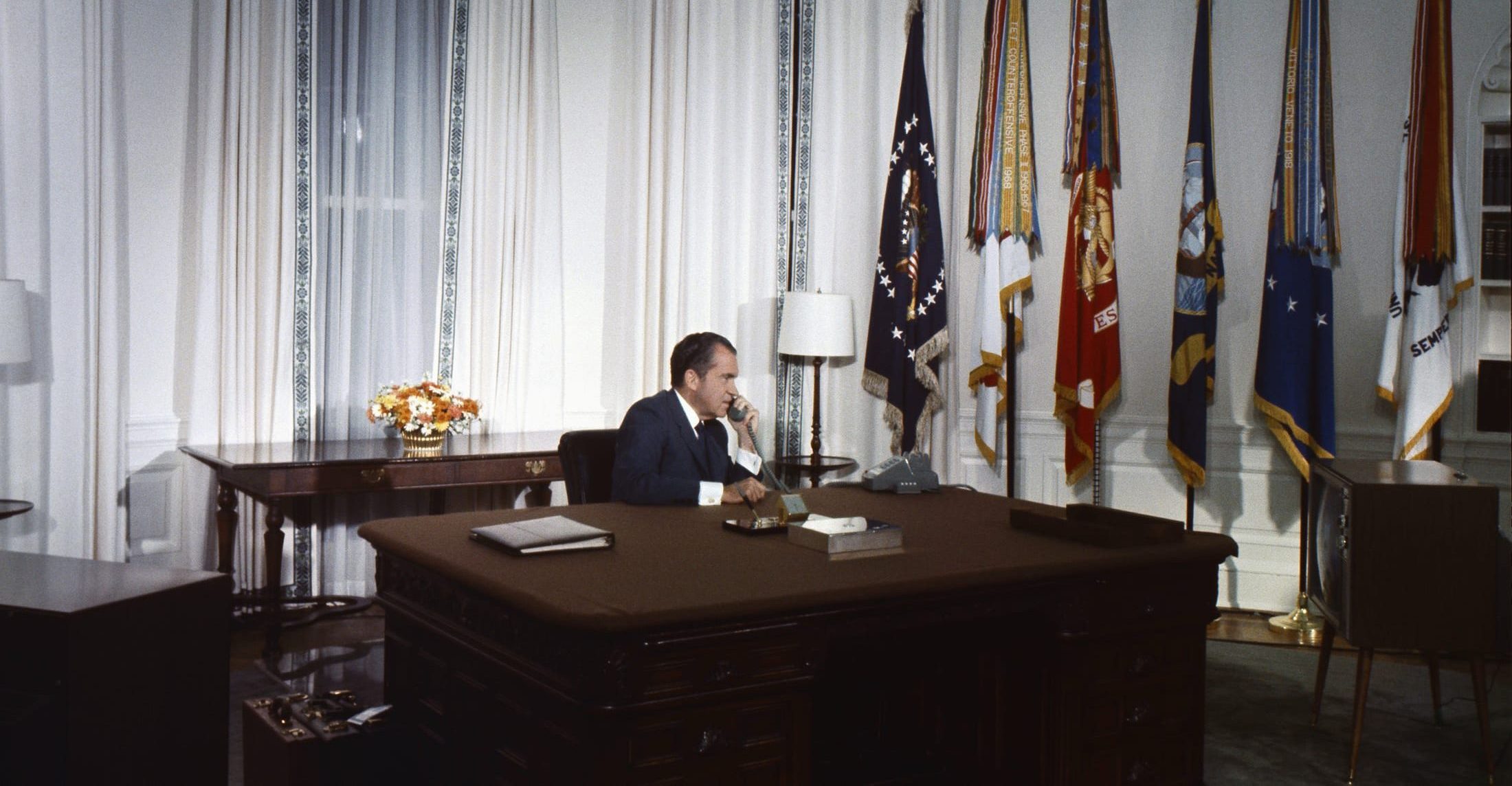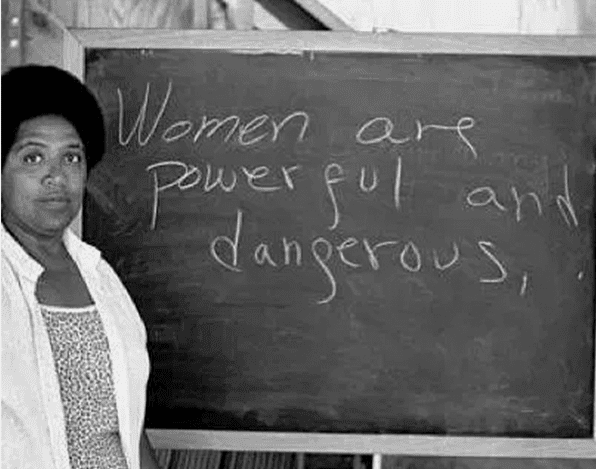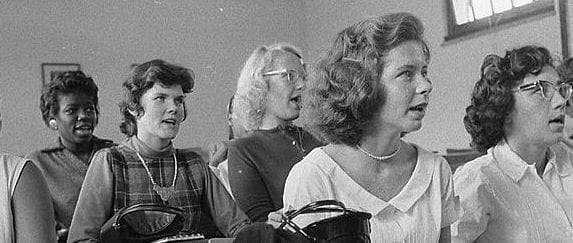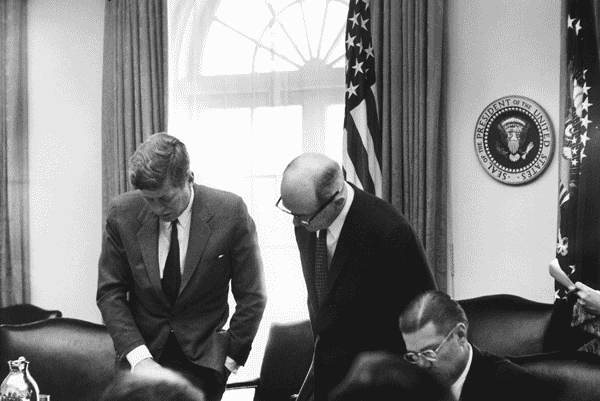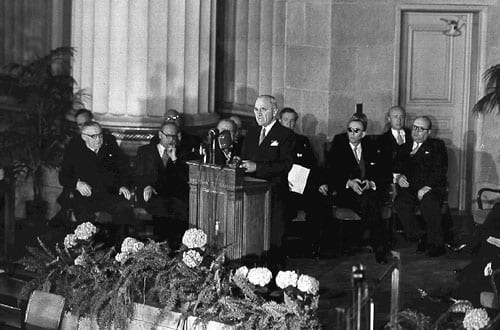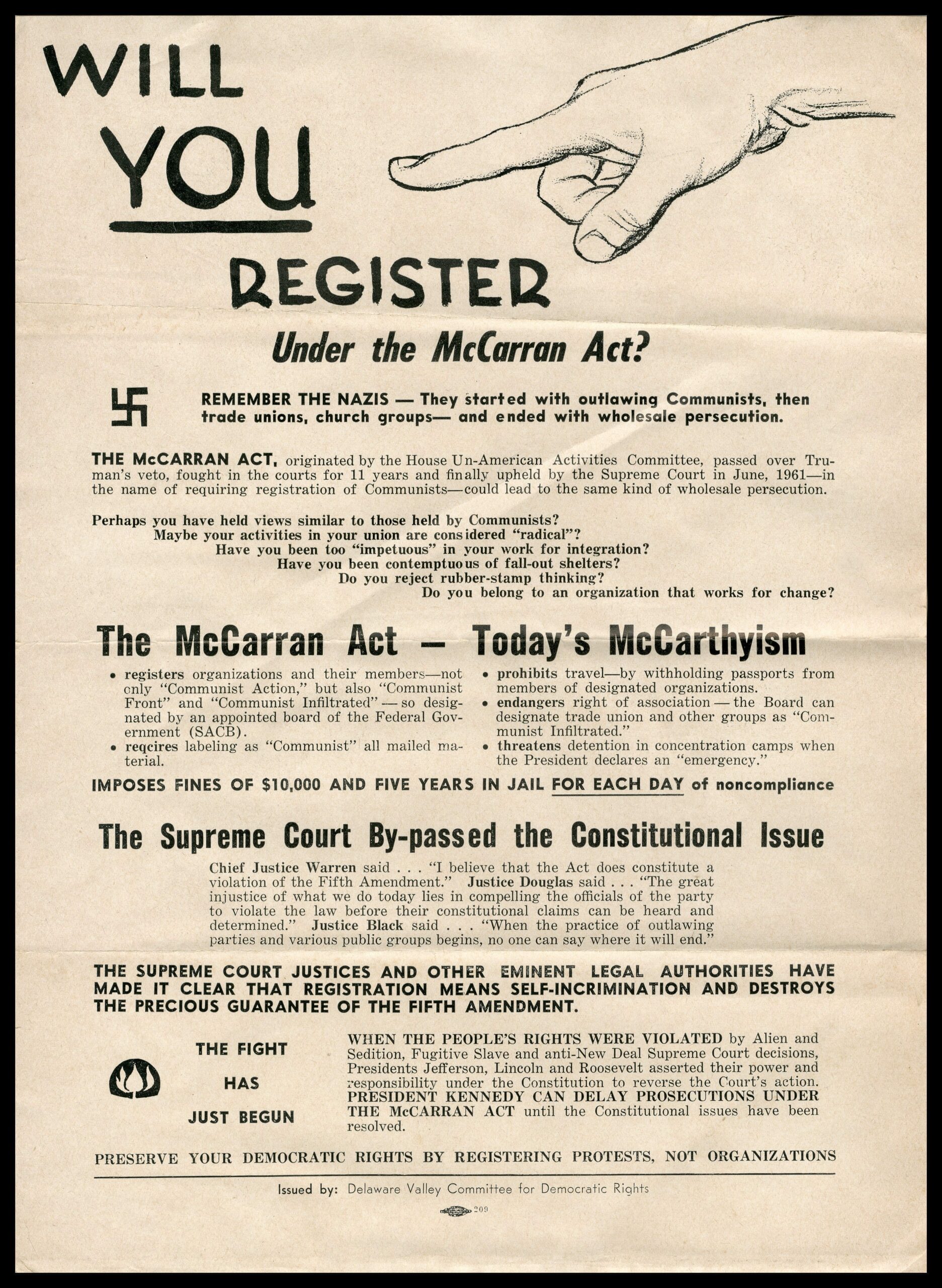


No related resources
Introduction
On August 11, 1965, less than one week after President Johnson signed the Voting Rights Act into law, a traffic stop in the Watts neighborhood of Los Angeles escalated into one of the worst riots in U.S. history. Over the next few years, hundreds more riots would follow, born of racial tensions in urban areas across the country. In July 1967, the Johnson administration responded by appointing an eleven-member commission, the National Advisory Commission on Civil Disorders, to study the causes and recommend remedies for the violence. The commission became better known as the Kerner Commission, so named for its chairman, Governor Otto Kerner of Illinois.
In its major conclusions, the Kerner Commission’s report represented a continuation of the Moynihan report, which forecast that there would be no social peace in the United States before the achievement of approximate equality of socioeconomic results across racial lines. In assigning responsibility for the disorders ultimately to white racism and proximately to material deprivation, and in calling for a massive expansion of federal antipoverty programs, the report influenced mainstream liberal thinking about racial divisions for decades to come. It sold more than two million copies. These excerpts are from the summary at the beginning of the report.
Source: Report of the National Advisory Commission on Civil Disorders; available at https://
babel.hathitrust.org/cgi/pt?id=mdp.39015000225410&view=1up&seq=7.
Introduction
The summer of 1967 again brought racial disorders to American cities, and with them shock, fear and bewilderment to the nation.
The worst came during a two-week period in July, first in Newark and then in Detroit.
Each set off a chain reaction in neighboring communities.
On July 28, 1967, the president of the United States established this commission and directed us to answer three basic questions:
- What happened?
- Why did it happen?
- What can be done to prevent it from happening again?
To respond to these questions, we have undertaken a broad range of studies and investigations. We have visited the riot cities; we have heard many witnesses; we have sought the counsel of experts across the country.
This is our basic conclusion: Our nation is moving toward two societies, one black, one white—separate and unequal.
Reaction to last summer’s disorders has quickened the movement and deepened the division. Discrimination and segregation have long permeated much of American life; they now threaten the future of every American.
This deepening racial division is not inevitable. The movement apart can be reversed. . . .
The alternative is not blind repression or capitulation to lawlessness. It is the realization of common opportunities for all within a single society.
This alternative will require a commitment to national action—compassionate, massive, and sustained, backed by the resources of the most powerful and the richest nation on this earth. From every American it will require new attitudes, new understanding, and, above all, new will. . . .
Segregation and poverty have created in the racial ghetto a destructive environment totally unknown to most white Americans.
What white Americans have never fully understood but what the Negro can never forget—is that white society is deeply implicated in the ghetto. White institutions created it, white institutions maintain it, and white society condones it.
It is time now to turn with all the purpose at our command to the major unfinished business of this nation. It is time to adopt strategies for action that will produce quick and visible progress. It is time to make good the promises
of American democracy to all citizens—urban and rural, white and black, Spanish-surname, American Indian, and every minority group.
Our recommendations embrace three basic principles:
- To mount programs on a scale equal to the dimension of the problems;
- To aim these programs for high impact in the immediate future in order to close the gap between promise and performance;
- To undertake new initiatives and experiments that can change the system of failure and frustration that now dominates the ghetto and weakens our society.
These programs will require unprecedented levels of funding and performance, but they neither probe deeper nor demand more than the problems which called them forth. There can be no higher priority for national action and no higher claim on the nation’s conscience. . . .
Chapter 17. Recommendations for National Action
Only a commitment to national action on an unprecedented scale can shape a future compatible with the historic ideals of American society.
The great productivity of our economy, and a federal revenue system which is highly responsive to economic growth, can provide the resources. The major need is to generate new will—the will to tax ourselves to the extent necessary, to meet the vital needs of the nation. . . .
The major goal is the creation of a true union—a single society and a single American identity. Toward that goal, we propose the following objectives for national action:
Opening up opportunities to those who are restricted by racial segregation and discrimination, and eliminating all barriers to their choice of jobs, education and housing. . . .
We propose these aims to fulfill our pledge of equality and to meet the fundamental needs of a democratic and civilized society—domestic peace and social justice.
Employment
Pervasive unemployment and underemployment are the most persistent and serious grievances in minority areas. They are inextricably linked to the problem of civil disorder.
Despite growing federal expenditures for manpower development and training programs, and sustained general economic prosperity and increasing demands for skilled workers, about two million—white and nonwhite—are permanently unemployed. About ten million are underemployed, of whom 6.5 million work full time for wages below the poverty line. . . .
Negro males between the ages of fifteen and twenty-five predominated among the rioters. More than 20 percent of the rioters were unemployed, and many who were employed held intermittent, low status, unskilled jobs which they regarded as below their education and ability.
The Commission recommends that the federal government:
Undertake joint efforts with cities and states to consolidate existing manpower programs to avoid fragmentation and duplication.
Take immediate action to create two million new jobs over the next three years—one million in the public sector and one million in the private sector—to absorb the hard-core unemployed and materially reduce the level of underemployment for all workers, black and white. We propose 250,000 public sector and 300,000 private sector jobs in the first year.
Provide on-the-job training by both public and private employers with reimbursement to private employers for the extra costs of training the hard-core unemployed, by contract or by tax credits.
Provide tax and other incentives to investment in rural as well as urban poverty areas in order to offer to the rural poor an alternative to migration to urban centers.
Take new and vigorous action to remove artificial barriers to employment and promotion, including not only racial discrimination but, in certain cases, arrest records or lack of a high school diploma. Strengthen those agencies such as the Equal Employment Opportunity Commission, charged with eliminating discriminatory practices, and provide full support for Title VI of the 1964 Civil Rights Act allowing federal grant-in-aid funds to be withheld from activities which discriminate on grounds of color or race. . . .
Education
Education in a democratic society must equip children to develop their potential and to participate fully in American life. For the community at large, the schools have discharged this responsibility well. But for many minorities, and particularly for the children of the ghetto, the schools have failed to provide the educational experience which could overcome the effects of discrimination and deprivation. . . .
The bleak record of public education for ghetto children is growing worse. In the critical skills—verbal and reading ability—Negro students are falling further behind whites with each year of school completed. The high unemployment and underemployment rate for Negro youth is evidence, in part, of the growing educational crisis.
We support integration as the priority education strategy; it is essential to the future of American society. In this last summer’s disorders we have seen the consequences of racial isolation at all levels, and of attitudes toward race, on
both sides, produced by three centuries of myth, ignorance, and bias. It is indispensable that opportunities for interaction between the races be expanded.
We recognize that the growing dominance of pupils from disadvantaged minorities in city school populations will not soon be reversed. No matter how great the effort toward desegregation, many children of the ghetto will not, within their school careers, attend integrated schools.
If existing disadvantages are not to be perpetuated, we must drastically improve the quality of ghetto education. Equality of results with all-white schools must be the goal.
To implement these strategies, the Commission recommends:
- Sharply increased efforts to eliminate de facto segregation in our schools through substantial federal aid to school systems seeking to desegregate either within the system or in cooperation with neighboring school systems.
- Elimination of racial discrimination in northern as well as southern schools by vigorous application of Title VI of the Civil Rights Act of 1964.
- Extension of quality early childhood education to every disadvantaged child in the country.
- Efforts to improve dramatically schools serving disadvantaged children through substantial federal funding of year-round compensatory education programs, improved teaching, and expanded experimentation and research.
- Elimination of illiteracy through greater federal support for adult basic education.
- Enlarged opportunities for parent and community participation in the public schools.
- Reoriented vocational education emphasizing work-experience training and the involvement of business and industry.
- Expanded opportunities for higher education through increased federal assistance to disadvantaged students.
- Revision of state aid formulas to assure more per student aid to districts having a high proportion of disadvantaged school-age children.
The Welfare System
Our present system of public welfare is designed to save money instead of people, and tragically ends up doing neither. This system has two critical deficiencies:
First, it excludes large numbers of persons who are in great need, and who, if provided a decent level of support, might be able to become more productive and self-sufficient. No federal funds are available for millions of men and women who are needy but neither aged, handicapped, nor the parents of minor children.
Second, for those included, the system provides assistance well below the minimum necessary for a decent level of existence, and imposes restrictions that encourage continued dependency on welfare and undermine self-respect. . . .
The Commission recommends that the federal government, acting with state and local governments where necessary, reform the existing welfare system to:
- Establish uniform national standards of assistance at least as high as the annual “poverty level” of income, . . .
- Require that all states receiving federal welfare contributions participate in the Aid to Families with Dependent Children Unemployed Parents program (AFDC-UP) that permits assistance to families with both father and mother in the home, thus aiding the family while it is still intact.
- Bear a substantially greater portion of all welfare costs—at least 90 percent of total payments.
- Increase incentives for seeking employment and job training, but remove restrictions recently enacted by the Congress that would compel mothers of young children to work.
- Provide more adequate social services through neighborhood centers and family-planning programs.
- Remove the freeze placed by the 1967 welfare amendments on the percentage of children in a state that can be covered by federal assistance.
- Eliminate residence requirements.
As a long-range goal, the Commission recommends that the federal government seek to develop a national system of income supplementation based strictly on need with two broad and basic purposes:
- To provide, for those who can work or who do work, any necessary supplements in such a way as to develop incentives for fuller employment;
- To provide, for those who cannot work and for mothers who decide to remain with their children, a minimum standard of decent living, and to aid in the saving of children from the prison of poverty that has held their parents.
- A broad system of implementation would involve substantially greater federal expenditures than anything now contemplated. The cost will range widely depending on the standard of need accepted as the “basic allowance” to individuals and families, and on the rate at which additional income above this level is taxed. Yet if the deepening cycle of poverty and dependence on welfare can be broken, if the children of the poor can be given the opportunity to scale the wall that now separates them from the rest of society, the return on this investment will be great indeed.
Housing
. . .The housing problem is particularly acute in the minority ghettos. Nearly two-thirds of all nonwhite families living in the central cities today live in neighborhoods marked with substandard housing and general urban blight. . . .
Two points are fundamental to the Commission’s recommendations:
- First: Federal housing programs must be given a new thrust aimed at overcoming the prevailing patterns of racial segregation. If this is not done, those programs will continue to concentrate the most impoverished and dependent segments of the population into the central-city ghettos where there is already a critical gap between the needs of the population and the public resources to deal with them.
- Second: The private sector must be brought into the production and financing of low and moderate rental housing to supply the capabilities and capital necessary to meet the housing needs of the nation.
The Commission recommends that the federal government:
- Enact a comprehensive and enforceable federal open housing law to cover the sale or rental of all housing, including single family homes.
- Reorient federal housing programs to place more low and moderate income housing outside of ghetto areas.
- Bring within the reach of low and moderate income families within the next five years six million new and existing units of decent housing, beginning with 600,000 units in the next year.
To reach this goal we recommend:
- Expansion and modification of the rent supplement program to permit use of supplements for existing housing, thus greatly increasing the reach of the program.
- Expansion and modification of the below-market interest rate program to enlarge the interest subsidy to all sponsors and provide interest-free loans to nonprofit sponsors to cover pre-construction costs, and permit sale of projects to nonprofit corporations, cooperatives, or condominiums.
- Creation of an ownership supplement program similar to present rent supplements, to make home ownership possible for low-income families.
- Federal write-down of interest rates on loans to private builders constructing moderate-rent housing.
- Expansion of the public housing program, with emphasis on small units on scattered sites, and leasing and “turnkey” programs.1
- Expansion of the Model Cities program.2
- Expansion and reorientation of the urban renewal program to give priority to projects directly assisting low-income households to obtain adequate housing.
Conclusion
. . . We have provided an honest beginning. We have learned much. But we have uncovered no startling truths, no unique insights, no simple solutions. The destruction and the bitterness of racial disorder, the harsh polemics of black revolt and white repression have been seen and heard before in this country.
It is time now to end the destruction and the violence, not only in the streets of the ghetto but in the lives of people.
- 1. Housing that is ready for occupancy as soon as it is built, as opposed to housing that is built to order and finished at the direction of the buyer.
- 2. The Model Cities program (1966–74), part of the War on Poverty launched by the Johnson administration, sought to coordinate the improvement of physical infrastructure with the provision of social services. The program also stressed citizen participation.

Conversation-based seminars for collegial PD, one-day and multi-day seminars, graduate credit seminars (MA degree), online and in-person.








